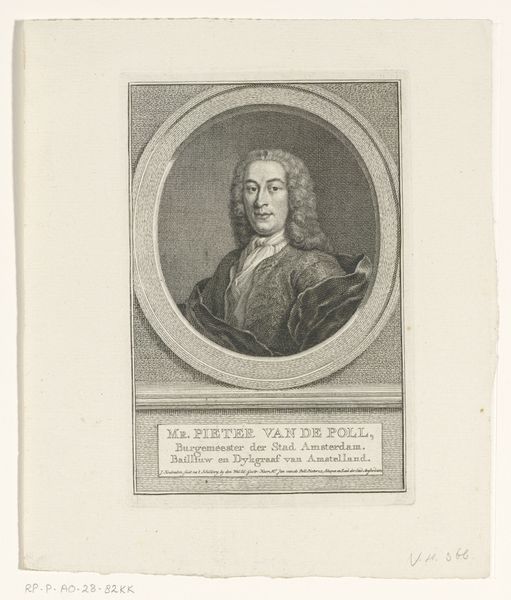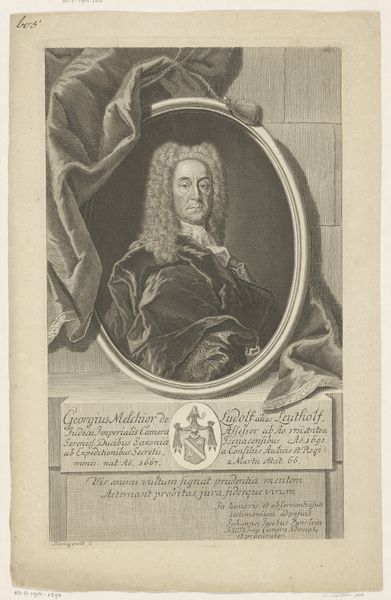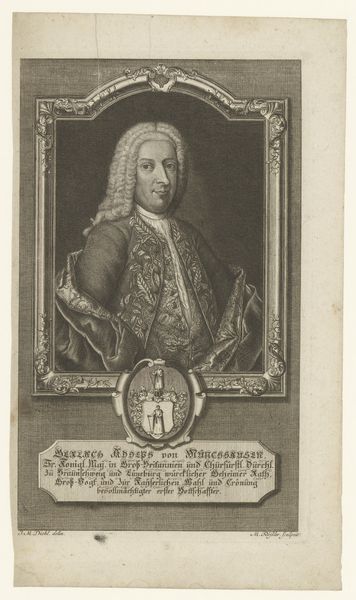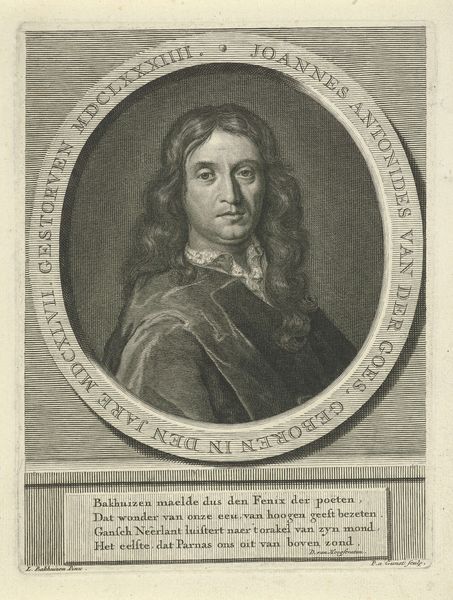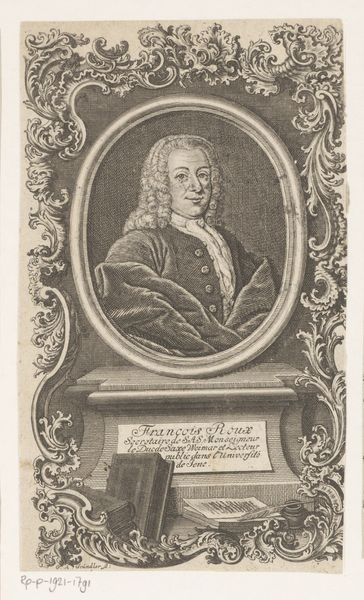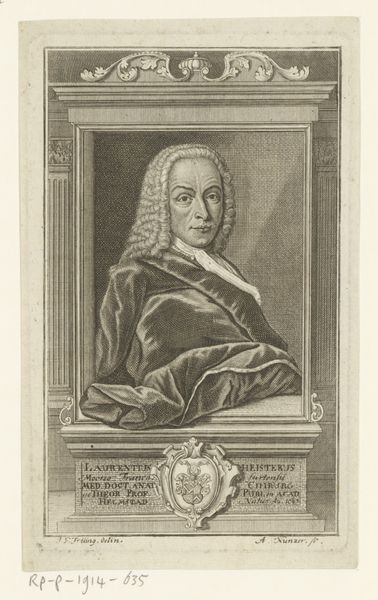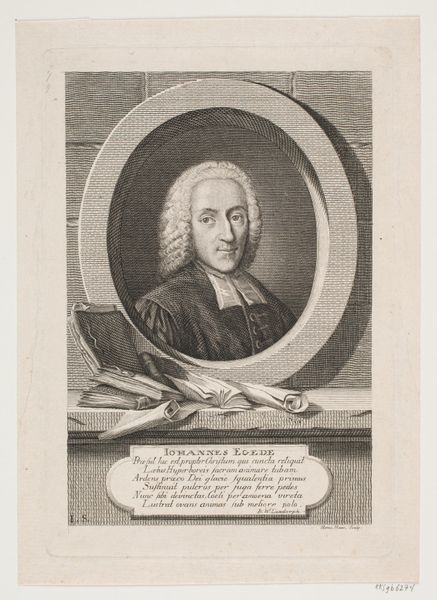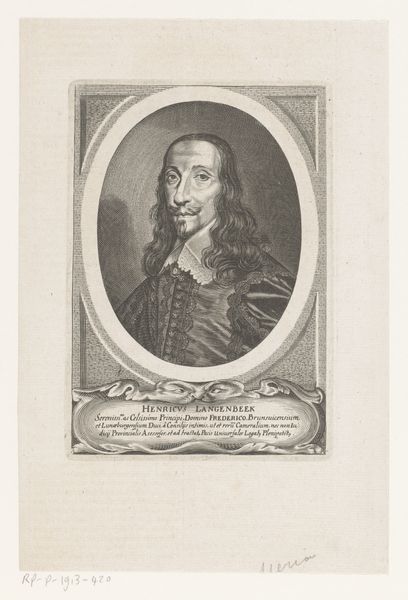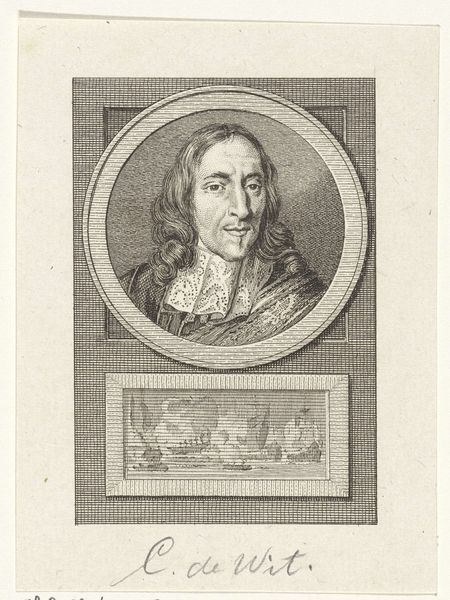
Dimensions: height 122 mm, width 90 mm
Copyright: Rijks Museum: Open Domain
This is Pierre Laurent Auvray's engraving of Ulysses von Salis-Marschlins. The ornate lace collar and glinting armor speak to von Salis-Marschlins's esteemed position, reflecting an era where dress mirrored social standing. Yet, observe how Auvray frames von Salis-Marschlins within an oval cartouche. This recalls the Roman tradition of depicting emperors and heroes, suggesting a conscious effort to imbue the subject with classical virtues and timelessness. Such framing devices appear throughout art history, from Renaissance portraiture to contemporary photography, each time invoking a sense of history and continuity. Consider the psychological weight of these symbols. Armor, historically for protection, can also symbolize a guarded interior, a subconscious barrier against vulnerability. Similarly, the lace collar, a mark of refinement, hints at the societal pressures of maintaining appearances. These elements resonate, engaging us on a deep, subconscious level. The armor, the lace, the oval frame—these are not merely aesthetic choices. They are cultural echoes, continuously resurfacing and evolving across time.
Comments
No comments
Be the first to comment and join the conversation on the ultimate creative platform.
